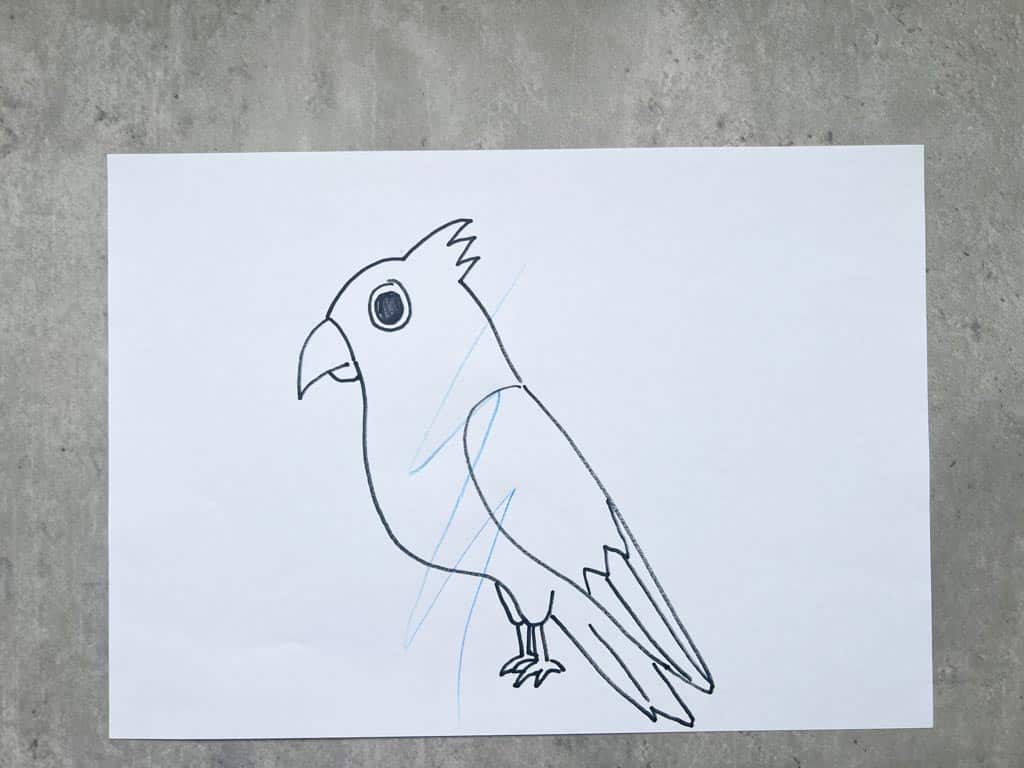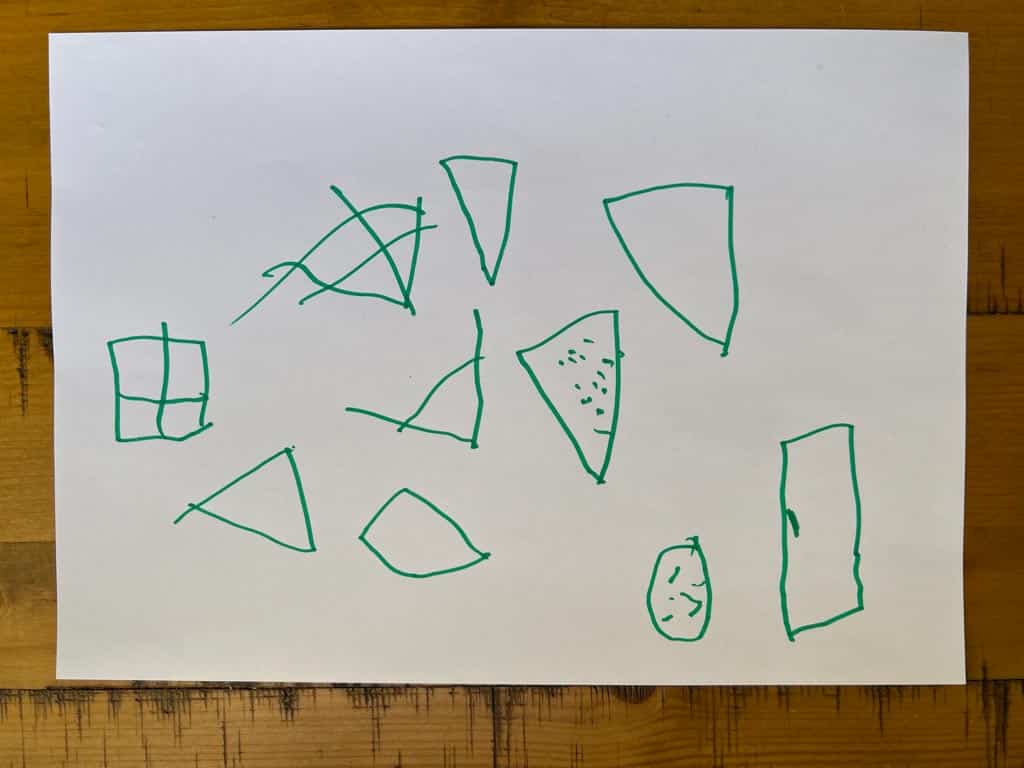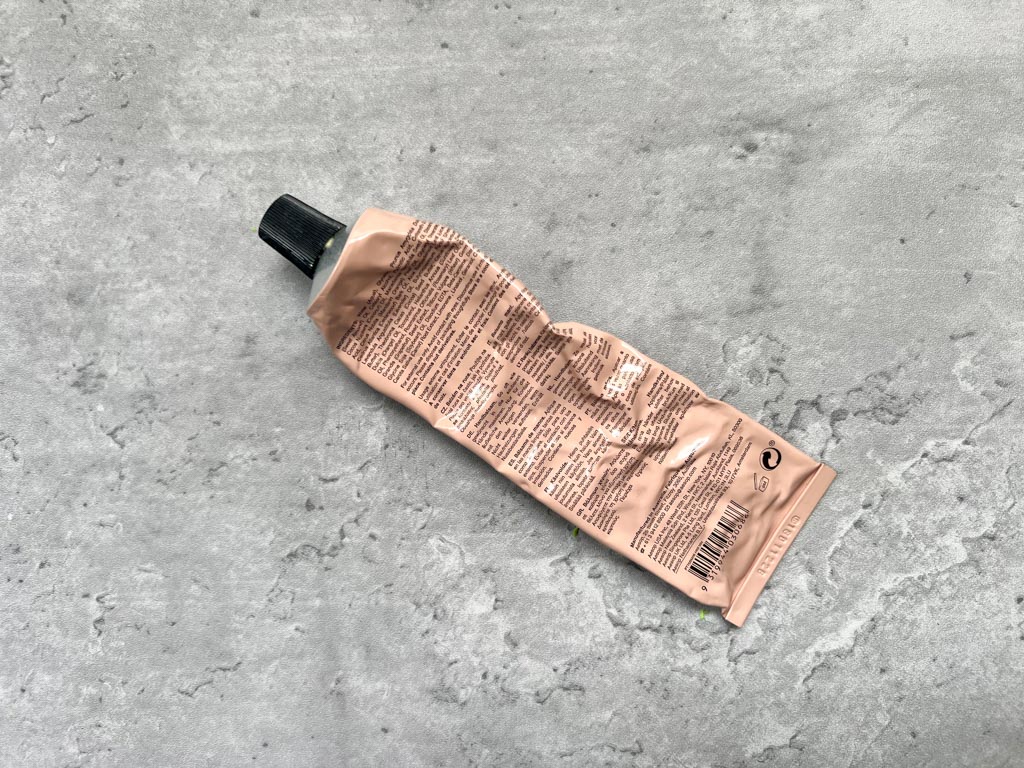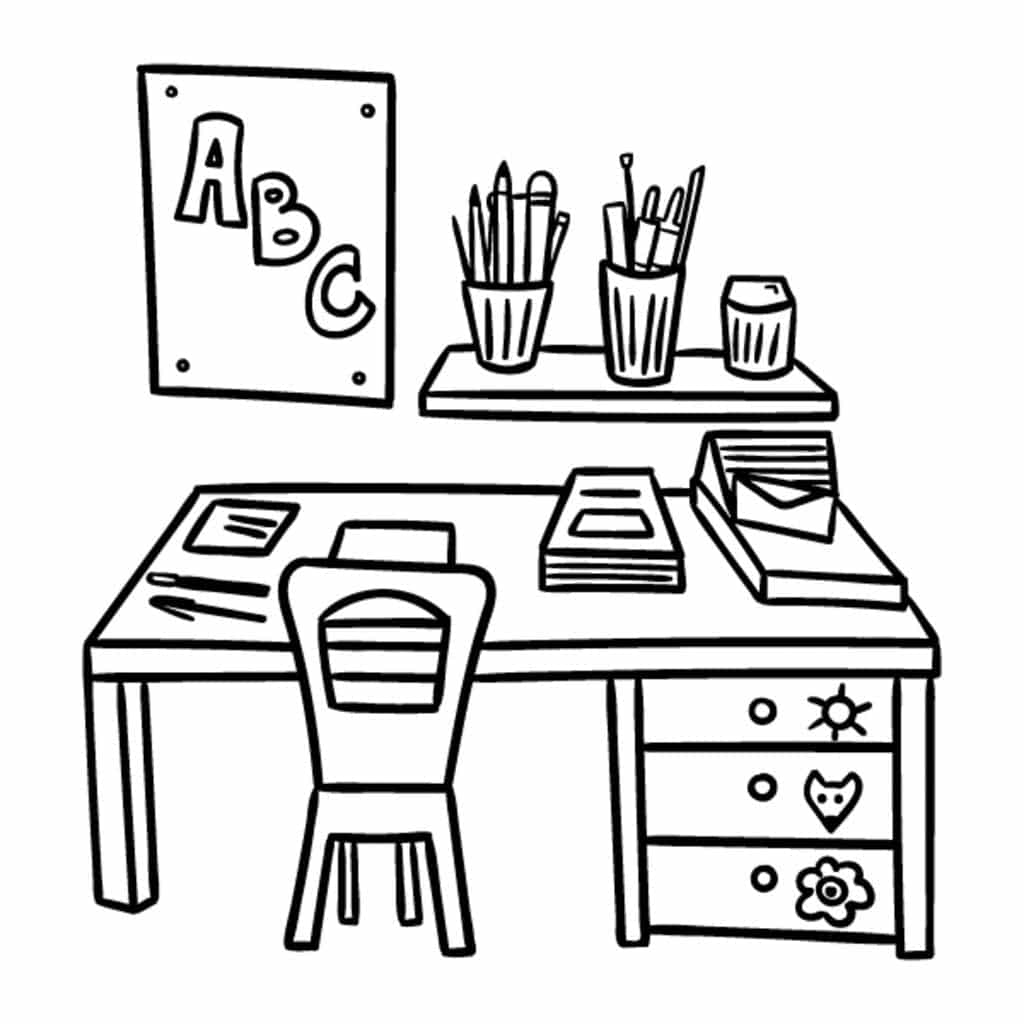You can lead a horse to water.
And you can give a child a pencil.
The result is the same. What happens next is out of your hands.
Around the time of her fifth birthday, my youngest daughter created a menu for her ‘café’.

Not bad.
She had to check some of the spellings with her brother but the writing was all her own work.
Some children just love to write. They spend all day at the kitchen table, colouring in, drawing pictures and putting words on paper.
If your child is like this, congratulations. You can close this email and get on with your day.
Still here?
Then let me show you something my eldest produced at around the same age. It was in a school book so I don’t have the original, but here is an approximation:

Yes, that’s right. There is a faint blue scribble going across the page.
He didn’t even bother to stay inside the lines.
The whole thing was just infra dig.
I was shown this masterpiece at a parents’ evening meeting with his teacher.
You’re that 100 Toys guy, aren’t you? I could see his teacher thinking.Didn’t you used to teach early years?
Today’s email is about writing and how, even if your child isn’t doing much right now, you can make sure things turn out alright in the end.
An email from a reader
My son is 5 (and three quarters!) / in Year 1 and he’s on the verge of not wanting to go to school because his handwriting is so poor. I think last year when they were all learning letter formation he was still at the scribbling stage so he was mentally checked out for those lessons. Last parents evening, in October, they were talking about giving him a laptop in January. I did A LOT of handwriting practice books (which he hated) and we did the mazes, got the playdough out, even introduced video game controllers… Now we have another parents’ evening booked for the end of the month and I’m dreading hearing the same thing.
The advice I get from the teacher has always been ‘gross motor and fine motor activities at home please’ but the boy is always fiddling/jumping/swinging on something at home. The only time he sits still is for his 30 minutes of video games when he gets home. I really don’t know what to do.
He has a twin sister who is also struggling with writing – but not to the same extent. It’s not that I ‘blame’ myself for the struggles they’re having but I have strengths and weaknesses, and tidying up lots of fiddly bits from when the twins were 3/4 years old filled me with dread so we did very little beading/playdough/lego when they were younger. I’m finally feeling like I can do that, but after sitting still all day at school they just want to run around.
This has turned into a very long email but I would appreciate any advice you can give!
If you feel the same way, you are not alone. I get emails like this every week.
OK, so let’s take a look at what might be going on here and then we can consider activities.
The solution
Of course, it’s impossible to diagnose a problem like this over email so we’ll have to talk in general terms.
The steps are:
- Fix the skills gap
- Rule out special needs
- Make writing a high-status activity
- Play
1. Fix the skills gap
Sometimes, all that’s required is more practice. For one reason or another, there wasn’t enough time to hone fine motor activities during the preschool years. You didn’t improve spatial reasoning with construction sets and puzzles. Focus and attention were not strengthened with open-ended play. But all is not lost!
Here’s a list of classic pre-writing activities. Given time, they should be enough to get your child forming letters. If none of these work, scroll down to section 4.
- Fine motor activities | Develop the strength and dexterity to make marks
- Spatial reasoning | b or d? p or q? Learn to orientate letters correctly with puzzle play
- Pencil control activities | Mazes, join the dots, follow the lines
- Pencil grip | Hold a pencil properly for an easy, economical style
- Open-ended play | Learn to focus
- Use an easel | Writing on vertical surfaces improves wrist extension
- Create a writing corner | Make writing fun
- Hand-eye co-ordination | Play games that improve this skill
Above all, make it easy for your child to write. Put a pot of pencils on the kitchen table. Put another one in the home corner or play kitchen. Involve your child whenever you write.
Learn how children use schemas to make and combine marks.
2. Special needs
Five is on the cusp of being too young to reliably diagnose special needs. Children develop at such different rates – and in their own idiosyncratic ways – that it’s hard to be sure. You might get an inkling once school starts if you notice that your child is markedly behind peers in some significant way. If you’re at all worried, speak to your GP or child’s teacher in the first instance.
- Dysgraphia. This is a neurological disorder that affects writing. It can manifest as difficulties with spelling, handwriting, and organising ideas on paper. Compare dyslexia, which affects reading.
- Dyspraxia. Children with dyspraxia struggle with motor skills more generally. This makes writing difficult but there is also a broader ‘clumsiness’ that is absent from dysgraphia.
- ADHD. ADHD doesn’t affect handwriting directly but it does impair the focus required for writing tasks.
- Visual processing issues. If you can’t discriminate the shapes that combine to make letters, writing them accurately becomes extremely difficult.
- Sensory processing disorder. Some children have difficulty processing sensory information, which can make holding a pencil or the sensation of paper uncomfortable.
On a bad day, most of us could find something on that list that applies to our child. But the odds are that there’s nothing to worry about. In most cases, all we have to do is…
3. Make writing a high status activity
If your child won’t write, you can’t force it.
But have you thought about why she won’t write? Assuming she has the skills, what could it be? Does she lack confidence? Or does she lack motivation?
When I was a child, I saw my parents write all the time. They sent and received letters, scribbled shopping lists and filled out important-looking forms.
Writing was something adults did, something to aspire to. In other words, it was a high status activity.
But things have changed. When was the last time your child saw you write anything meaningful?
Texting on your phone doesn’t count!
The solution is simple. Start writing by hand and make sure your child sees you. Write down a recipe or a list of birthday presents.
Even easier, start with tally charts to record scores when you play games.
Three for me and two for you. I win!
Write the players’ names at the top of the page.
Then look for ways to add single words to everyday activities. Draw pictures and label the figures. Write names for a family sweepstake.
And don’t worry that the letter formation isn’t perfect. At this stage your child may produce what’s known as ‘emergent writing’.
Look at this picture. It contains all the elements a child needs to form every letter of the alphabet. Can you identify them?

Verticals, horizontals, diagonals, dots, circles, angles and intersecting lines. This picture has it all. It was produced at a time when I my daughter (aged almost 4) wasn’t yet writing. But I wasn’t worried. I could see all the pieces were in place for her to succeed.
If your child can draw simple shapes like these, you have nothing to worry about.
In fact, even this contains all the strokes you need. It’s just a case of building up more control, and that comes through practice.

And if your child hasn’t yet started school, the best is yet to come. If you think writing at home is a high status activity, wait til you see how it is celebrated and rewarded at school. Children get the message very quickly that writing has value.
Of course, some children – like those of the subscriber whose email I featured above – take a little longer. And that’s OK.
In such a situation you have one, final, secret weapon…
Play
OK, so you have a reluctant writer.
What to do?
The fine motor activities aren’t making a difference. The book of mazes and join-the-dots lies unused.
All that’s left is play.
The trick is to offer materials that allow your child to make discoveries that indirectly lead to letter formation.
Here are some things you may have lying about the house. Don’t worry if you don’t – there’s no need to go out and buy anything. I simply want to illustrate the countless ways you can practise letter formation using everyday objects. I’ve photographed them being used to spell the word ‘CAT’ but spelling words is secondary. Have fun. Arrange them into shapes. Make pictures.
Here is a picture of a house:

But look a little more closely. You also have an enclosure and a line, which are connected. Turn them 90º and you may notice something:

The letter ‘p’.
The letters of the alphabet are no more than basic shapes joined together.
While we wait for our children to pick up a pencil we must give them the opportunity to identify and reproduce shapes.
What should we use? It doesn’t matter.
Here is some inspiration.
Base ten rods and cubes. Matchsticks and lolly sticks also work:

Tiles from the game, Blokus:

Pattern blocks:

Numicon:

Pasta

Beads and other craft materials:

Pipe cleaners


Playdough:

Letters to trace, lines to follow:


Shapes to cut out:

Make it more fun with crinkly scissors

Don’t forget to practise those fine motor skills. Squeeze out the toothpaste and hand cream:

Play with shapes. What can you make?

And, most importantly: draw.
A child who can draw this is ready to write anything she likes:

Final word
Seeing your child fall behind her peers can be worrying. But – special needs aside – she will catch up. Keep a pot of pencils and some paper on the kitchen table. No pressure. Just make it available. Even simple colouring in gets you 90% of the way to writing.
Most importantly, keep the pressure off and play. Not screens. Just old fashioned materials. My youngest loved to play with the contents of the stationary drawer. Paper clips, bulldog clips, treasury tags and stick labels demand high levels of fine motor control and you can incorporate them into all kinds of games. Get creative. See what you can come up with.
My eldest son now writes beautifully.
It didn’t take that long. Within 6 months of ‘colouring’ that infamous parrot he was writing with confidence.
Your child will learn too.
Just remember to keep it fun.

Have you run out of ideas?
What if you didn’t have to trawl the internet for play inspiration? What if your child’s freely-chosen activities were simple to set up, educational and deeply engaging?
How would that change things?
Our courses, A Year With My Child, Get Set Five and 5 Plus are designed for parents of toddlers, preschoolers and the over 5s and they’re packed full of fun and sensible advice.
Enter your email and we’ll send you free modules from each course. And then sit back and relax as your child learns to make her own fun.


